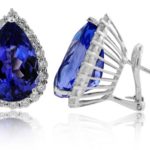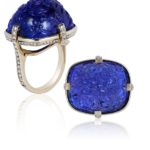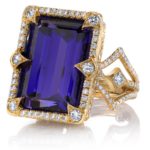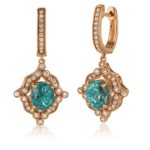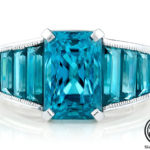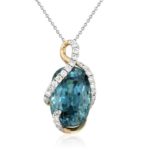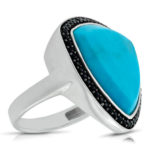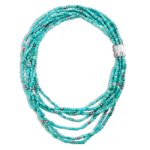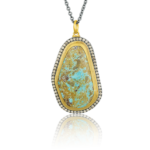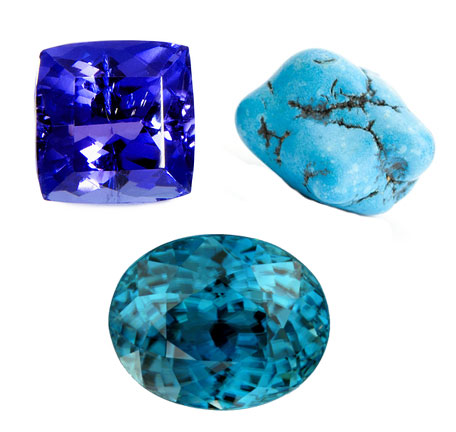 December’s birthstones offer three ways to fight the winter blues: tanzanite, zircon, and turquoise—all of them, appropriately, best known for beautiful shades of blue.
December’s birthstones offer three ways to fight the winter blues: tanzanite, zircon, and turquoise—all of them, appropriately, best known for beautiful shades of blue.
These gems range from the oldest on earth (zircon) to one of the first mined and used in jewelry (turquoise), to one of the most recently discovered (tanzanite).
Below is a collection of beautiful blues designed by our AGS members. Click on the images to see all the beautiful details!
Tanzanite
Tanzanite is the exquisite blue variety of the mineral zoisite that is only found in one part of the world. Named for its limited geographic origin in Tanzania, tanzanite has quickly risen to popularity since its relatively recent discovery.
Due to pleochroism, tanzanite can display different colors when viewed from different angles. Stones must be cut properly to highlight the more attractive blue and violet hues and deemphasize the undesirable brown tones.
The majority of tanzanite on the market today is heat treated to minimize the brown colors found naturally and to enhance the blue shades that can rival sapphire. Between its deep blue color and its limited supply, tanzanite is treasured by many—whether one is born in December or not!
Zircon
Zircon is an underrated gem that’s often confused with synthetic cubic zirconia due to similar names and shared use as diamond simulants. Few people realize that zircon is a spectacular natural gem available in a variety of colors.
Zircon commonly occurs brownish red, which can be popular for its earth tones. However, most gem-quality stones are heat treated until colorless, gold or blue (the most popular color). Blue zircon, in particular, is the alternative birthstone for December.
Whether you’re buying blue zircon to celebrate a December birthday, or selecting another shade just to own a gorgeous piece of earth’s oldest history, zircon offers many options.
Turquoise
Turquoise, the traditional birthstone of December, is also gifted on the 11th wedding anniversary. But buying turquoise doesn’t require special occasions; its namesake blue color has been internationally revered for centuries as a symbol of protection, friendship, and happiness.
Thanks to its historical and cultural significance in many Native American tribes, turquoise remains most popular throughout the southwestern U.S.—which supplies most of the world’s turquoise today.
Turquoise is one of few gems not judged by the 4Cs of diamond quality. Instead, the main factors that determine its value are color, matrix, hardness, and size. The most prized turquoise color is a bright, even sky blue. Greenish tones can lower the value of a stone, although some designers prefer it.
Because of its fragility, turquoise is often treated to enhance durability and color. Some treatments involving wax and oil are relatively harmless, while other methods—including dye, impregnation, and reconstitution—are more controversial. Seek out an AGS jeweler who can help you find the best quality turquoise.
Shopping for fine jewelry should never make you blue! Make sure you shop with a trusted jeweler and buy it with confidence. Click here to search for an AGS jeweler near you.
